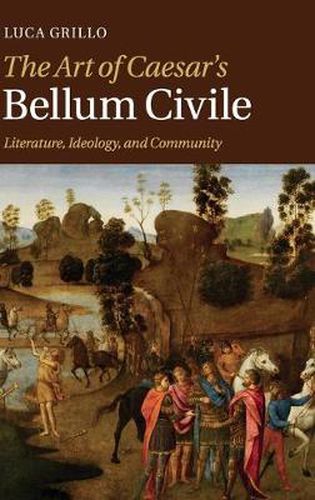Readings Newsletter
Become a Readings Member to make your shopping experience even easier.
Sign in or sign up for free!
You’re not far away from qualifying for FREE standard shipping within Australia
You’ve qualified for FREE standard shipping within Australia
The cart is loading…






Traditional approaches have reduced Caesar’s Bellum Civile to a tool for teaching Latin or to one-dimensional propaganda, thereby underestimating its artistic properties and ideological complexity. Reading strategies typical of scholarship on Latin poetry, like intertextuality, narratology, semantic, rhetorical and structural analysis, cast a new light on the Bellum Civile: Ciceronian language advances Caesar’s claim to represent Rome; technical vocabulary reinforces the ethical division between ‘us’ and the ‘barbarian’ enemy; switches of focalization guide our perception of the narrative; invective and characterization exclude the Pompeians from the Roman community, according to the mechanisms of rhetoric; and the very structure of the work promotes Caesar’s cause. As a piece of literature interacting with its cultural and socio-political world, the Bellum Civile participates in Caesar’s multimedia campaign of self-fashioning. A comprehensive approach, such as has been productively applied to Augustus’ program, locates the Bellum Civile at the interplay between literature, images and politics.
$9.00 standard shipping within Australia
FREE standard shipping within Australia for orders over $100.00
Express & International shipping calculated at checkout
Traditional approaches have reduced Caesar’s Bellum Civile to a tool for teaching Latin or to one-dimensional propaganda, thereby underestimating its artistic properties and ideological complexity. Reading strategies typical of scholarship on Latin poetry, like intertextuality, narratology, semantic, rhetorical and structural analysis, cast a new light on the Bellum Civile: Ciceronian language advances Caesar’s claim to represent Rome; technical vocabulary reinforces the ethical division between ‘us’ and the ‘barbarian’ enemy; switches of focalization guide our perception of the narrative; invective and characterization exclude the Pompeians from the Roman community, according to the mechanisms of rhetoric; and the very structure of the work promotes Caesar’s cause. As a piece of literature interacting with its cultural and socio-political world, the Bellum Civile participates in Caesar’s multimedia campaign of self-fashioning. A comprehensive approach, such as has been productively applied to Augustus’ program, locates the Bellum Civile at the interplay between literature, images and politics.